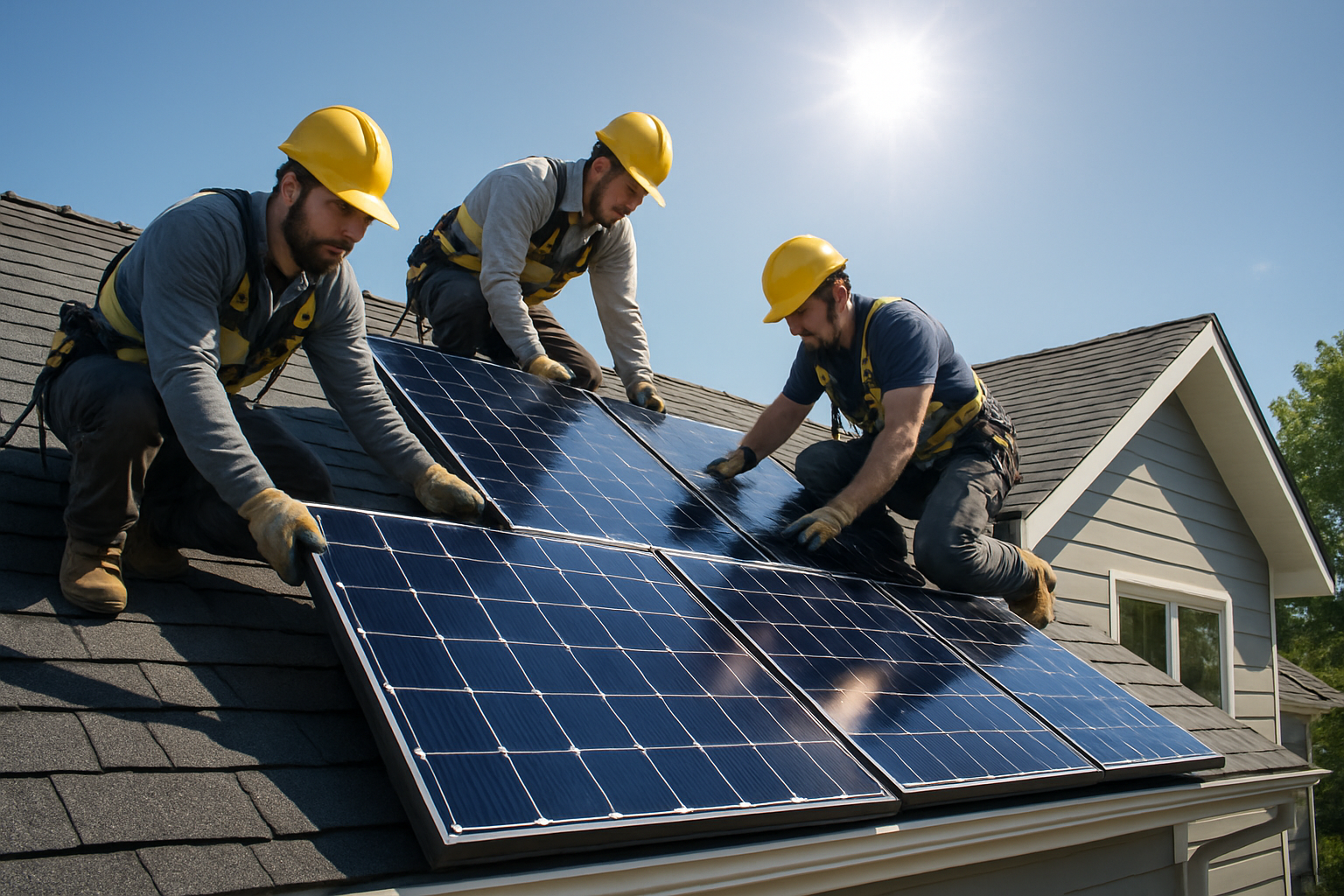Switching to solar is a big step toward energy independence and lower bills. The catch: the journey from signed contract to flipping the switch can hit snags. This guide explains the seven most common delay points and what you—and your installer—can do to keep things moving.

Key Takeaways
- Delays are predictable. Most bottlenecks come from incomplete assessments, paperwork errors, and unclear utility requirements.
- Preparation beats urgency. A complete plan set and early interconnection submission save weeks later.
- Communication is a scheduling tool. Quick responses to AHJ and utility queries keep your place in the queue.
The Foundation: Site Assessment and Design Hurdles
1) Inaccurate or Incomplete Site Assessments
A rushed assessment can hide structural issues or shading that will cripple performance later. Trees grow, rafters bow, and vents appear right where you planned a string.
Do this:
- Require an on-site visit with roof photos, rafter spacing, sheathing type, and attic access when safe.
- Ask for a shade analysis summary (e.g., monthly solar access percentage) and a preliminary production estimate.
- Confirm roof condition and any repairs before scheduling installation.
2) Overlooking Local Codes & Product Listings
AHJs (Authorities Having Jurisdiction) enforce specific code editions (e.g., NEC/IEC), fire-setback rules, labeling, rapid shutdown, and equipment listings. A design that passes in one city may fail next door.
Do this:
- Work with installers experienced in your city/county and utility territory.
- Ensure plan sets cite the correct code edition and include required labels/markings.
- Verify equipment has appropriate listings/certifications (UL/IEC) used by your AHJ.
Navigating the Paperwork Maze: Permitting
3) The Permitting Black Hole
Permits can stall when submittals are incomplete or your AHJ has a backlog. Typical missing items include structural calcs, one-line diagrams, and product spec sheets.
Do this:
- Ask for a pre-submission checklist and a copy of the exact plan set submitted.
- Designate a point of contact on your side to reply same-day to AHJ questions.
- When available, use standardized programs (e.g., online permitting portals) that shorten review cycles.
Utility Interconnection Agreement Delays
4) Grid Interconnection Queue & Requirements
Utilities review your design for safety and grid impact. Missing documents, mis-labeled meters, or an unexpected service upgrade can reset the clock.
Do this:
- Submit a complete interconnection package early, matching utility forms precisely.
- Label the service equipment and meter location clearly; ensure access on inspection day.
- Confirm who pays if service or transformer upgrades are required, and get that in writing.
Equipment & Supply Chain Challenges
5) Component Sourcing & Model Changes
Global supply chains change fast. If your specified module or inverter goes out of stock, you may need a redesign or amendment.
Do this:
- Before signing, request confirmation of stock and realistic lead times for each component.
- Ask for pre-approved “equivalents” that won’t require a full resubmittal.
- Document any substitutions and confirm whether AHJ/utility amendments are needed.
The Human Element: Scheduling & Weather
6) Crew Calendars, Roof Access, and Weather
Crew availability, homeowner access, and weather windows all matter. Wind, rain, or snow can force postponements for safety.
Do this:
- Hold tentative backup dates on your calendar, and keep driveways and access paths clear.
- Confirm start times, duration, and any power shut-offs 24–48 hours in advance.
- Ask your installer how they prioritize rescheduling if weather bumps your slot.
7) Failing the Final Inspection
Common misses include labeling, conduit support, rapid-shutdown issues, and mismatched plan sets vs. the as-built system.
Do this:
- Ask for an internal “pre-inspection” walk-through the day before inspection.
- Keep the approved plan set on site; make sure the as-built matches or is amended.
- Request a written punch-list if anything fails, with timelines for correction and re-inspection.
Homeowner Pre-Flight Checklist
- ☑ Roof repair/replace decisions finalized and scheduled (if needed).
- ☑ Shade analysis and production estimate received and reviewed.
- ☑ Plan set: site plan, one-line diagram, structural calcs, product spec sheets.
- ☑ AHJ permit submitted; you have the submittal receipt or portal ID.
- ☑ Interconnection application submitted; you have the utility case/ticket number.
- ☑ Equipment stock confirmed; documented equivalents pre-approved.
- ☑ Access: gates, pets, vehicles, attic, and electrical equipment clear.
- ☑ Inspection day availability confirmed; plan set and labels ready.
Summary Table: Delays & Avoidance Strategies
| Delay | Potential Impact | Avoidance Strategy |
|---|---|---|
| Inaccurate Site Assessment | Underperformance; structural surprises | On-site evaluation; shade analysis; roof condition verified |
| Permitting & Paperwork | Weeks or months of delay | Complete plan set; use checklists; respond quickly to AHJ |
| Utility Interconnection | Delayed activation; possible upgrade costs | Early, complete submission; clear labeling; written upgrade terms |
| Equipment Supply Chain | Standstills; redesigns | Confirm stock and lead times; pre-approve equivalents |
| Weather & Scheduling | Postponed work days | Backup dates; clear access; proactive communication |
| Failed Inspections | Rework; re-inspection; more delays | Pre-inspection; keep plan set on site; timely punch-list closeout |
Frequently Asked Questions
Will online permitting help?
Where available, standardized online permitting systems can reduce review times when applications are complete and accurate.
Should I upgrade my main electrical panel first?
If your installer identifies a needed service or panel upgrade, addressing it up front avoids last-minute delays and change orders.
What if my HOA has extra rules?
Obtain HOA approval in parallel with permitting. Provide visual mockups and product spec sheets to accelerate HOA review.





Leave a comment
All comments are moderated before being published.
This site is protected by hCaptcha and the hCaptcha Privacy Policy and Terms of Service apply.